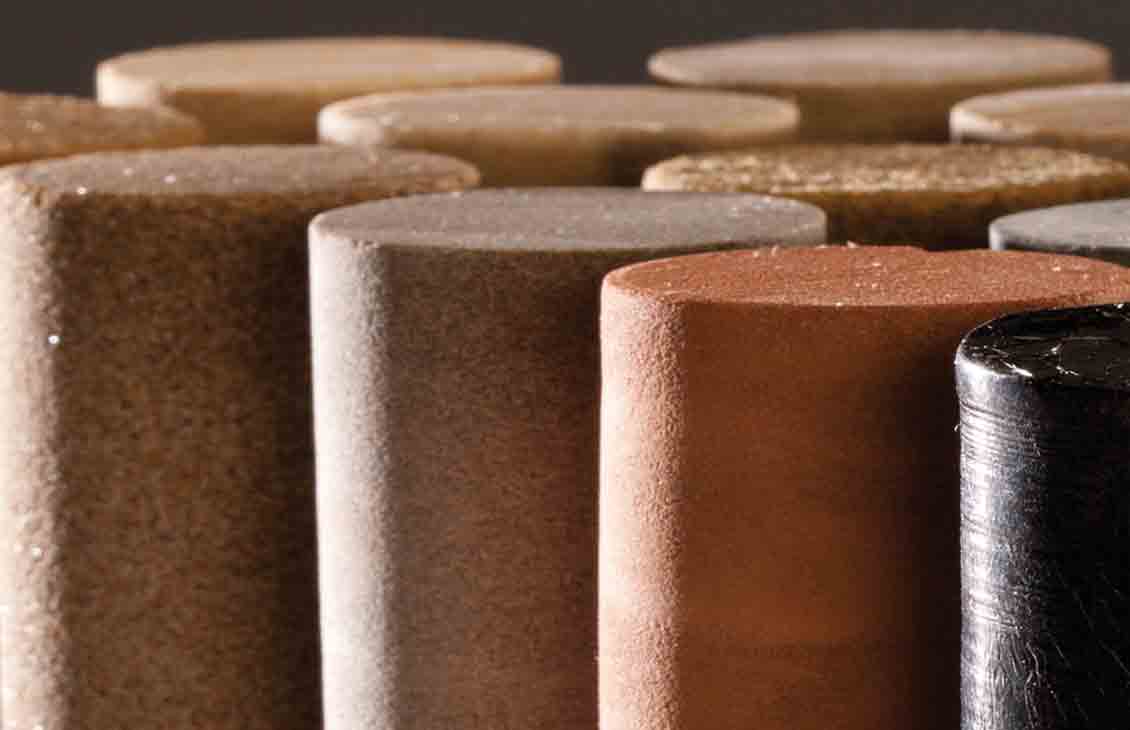ASTM D5084 Measurement of Hydraulic Conductivity of Rock Cores
The ASTM D5084 standard provides a method for measuring hydraulic conductivity in rock cores, which is critical for understanding the flow behavior and transport properties within oil and gas reservoirs. This parameter plays a pivotal role in optimizing production processes by enabling precise modeling of fluid movement through porous media.
Hydraulic conductivity determines how easily fluids can move through rocks under pressure. In the context of oil and gas testing, it helps predict water or hydrocarbon flow rates, which are essential for efficient extraction techniques such as enhanced oil recovery (EOR) and natural fracture stimulation. The measurement is particularly important in reservoir engineering where accurate predictions contribute to better resource management.
The ASTM D5084 protocol specifies the use of a constant-head permeameter setup wherein rock cores are placed between two porous plates. Water or another suitable fluid is then passed through at a controlled pressure gradient, allowing for continuous measurement of flow rates. This approach ensures reliable data that can be used to calibrate models and validate theoretical predictions.
The selection of appropriate core samples is crucial; they should represent the reservoir's lithological characteristics accurately. Preparing these cores involves drilling, cutting, and conditioning them in a way that minimizes stress-induced changes in their properties. Once prepared, they are inserted into the permeameter setup following strict guidelines to ensure consistent results.
Instrumentation used for this test includes high-precision flow meters capable of recording minute variations in fluid discharge rates accurately. Data acquisition systems provide real-time monitoring capabilities alongside automated data logging functions. These tools enable operators to capture comprehensive datasets effortlessly, enhancing the reliability and reproducibility of tests.
The methodology outlined in ASTM D5084 allows for both steady-state and transient flow conditions, offering insights into different aspects of hydraulic conductivity behavior. Steady-state measurements provide an average value representing overall permeability characteristics, while transient tests offer more detailed information about short-term fluctuations due to varying boundary conditions or initial moisture content.
Acceptance criteria for results depend on the specific application but generally involve comparison against expected values derived from reservoir simulations or historical data. Discrepancies between measured and predicted outcomes could indicate issues with sampling practices, equipment calibration, or model assumptions that need addressing before further analysis can proceed.
In summary, ASTM D5084 is a robust testing procedure used extensively in the oil & gas industry to assess hydraulic conductivity within rock cores. Its importance cannot be overstated given its direct impact on optimizing extraction methods and enhancing our understanding of subsurface geology.
Why It Matters
The measurement of hydraulic conductivity using ASTM D5084 is significant because it directly influences several key aspects of oil & gas operations, including reservoir management and production optimization. Accurate knowledge of this property helps in designing more effective drilling strategies and enhancing recovery rates.
- Optimized Production: Understanding the flow dynamics allows operators to target areas with higher conductivity, improving extraction efficiency.
- Enhanced Recovery Methods: Information gathered through these tests supports advanced techniques like CO2 flooding or steam injection, which rely heavily on effective fluid transport.
- Cost Efficiency: By predicting where interventions will yield the best returns, companies can allocate resources more strategically reducing overall costs associated with field development and maintenance.
- Safety Improvements: Knowing precise permeability levels aids in assessing potential risks related to well integrity or environmental impacts during operations.
In addition to these operational benefits, accurate measurement contributes significantly towards sustainability goals by promoting responsible resource utilization. It ensures that extraction processes are conducted sustainably without causing unnecessary harm to surrounding ecosystems.
Environmental and Sustainability Contributions
The ASTM D5084 method supports environmental stewardship in the oil & gas sector by providing essential data needed for sustainable practices. By accurately measuring hydraulic conductivity, operators can better understand their impact on local environments, enabling them to adopt strategies that minimize negative effects.
- Water Management: Understanding how fluids move through rocks helps manage water resources more effectively, reducing waste and ensuring compliance with environmental regulations.
- Emission Reduction: Optimized production techniques contribute to lower greenhouse gas emissions by minimizing energy consumption during extraction processes.
- Biodiversity Preservation: Sustainable practices supported by accurate testing results help preserve natural habitats around drilling sites, supporting ecosystem balance and biodiversity.
The insights gained from ASTM D5084 testing also aid in long-term planning for decommissioning activities. By understanding the nature of fluids present within reservoirs before operations cease, operators can plan dismantling procedures that limit environmental disturbances further down the line.
Overall, incorporating ASTM D5084 into standard operating procedures demonstrates a commitment to responsible resource management and sustainable development practices within the oil & gas industry.





